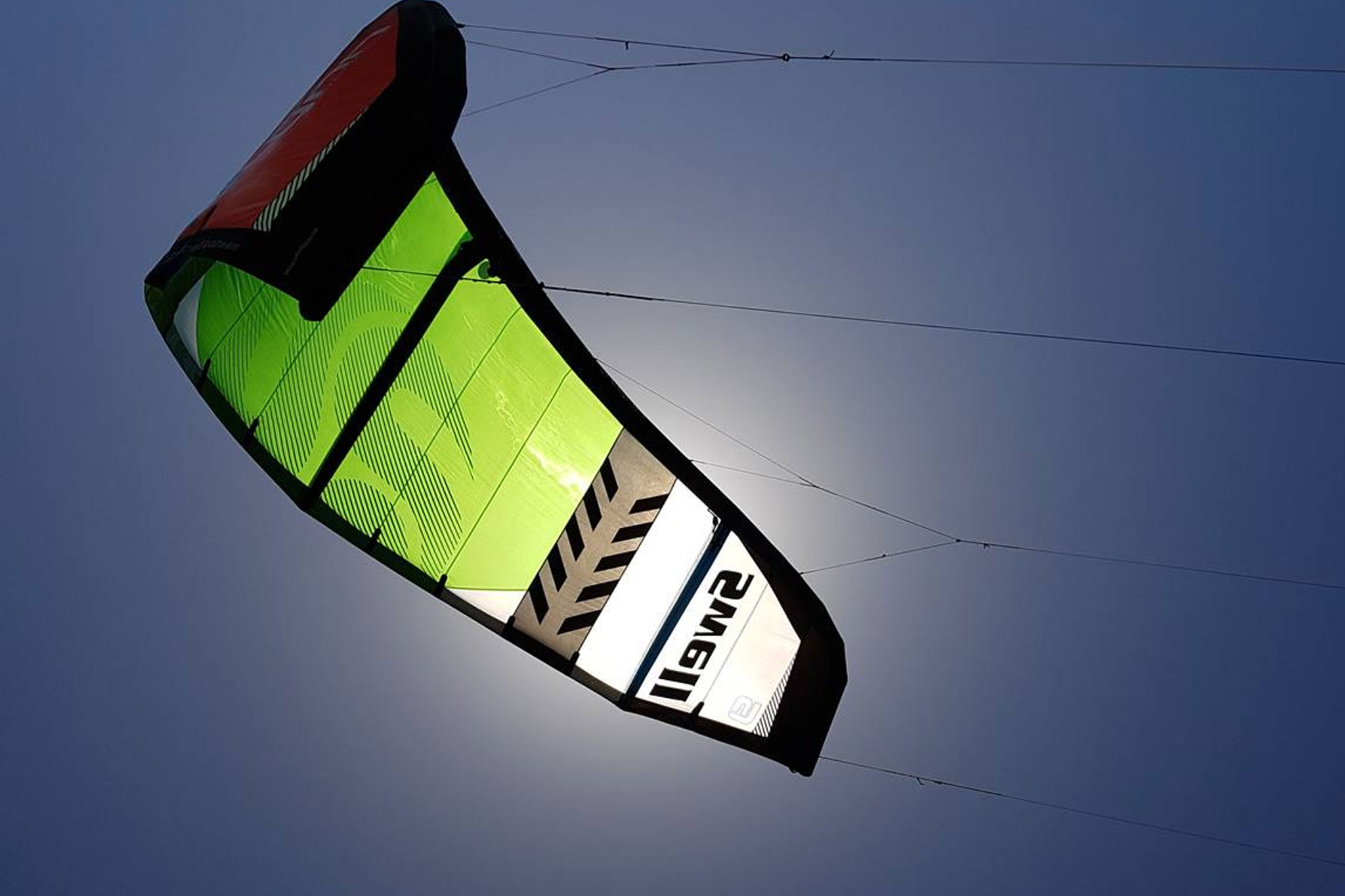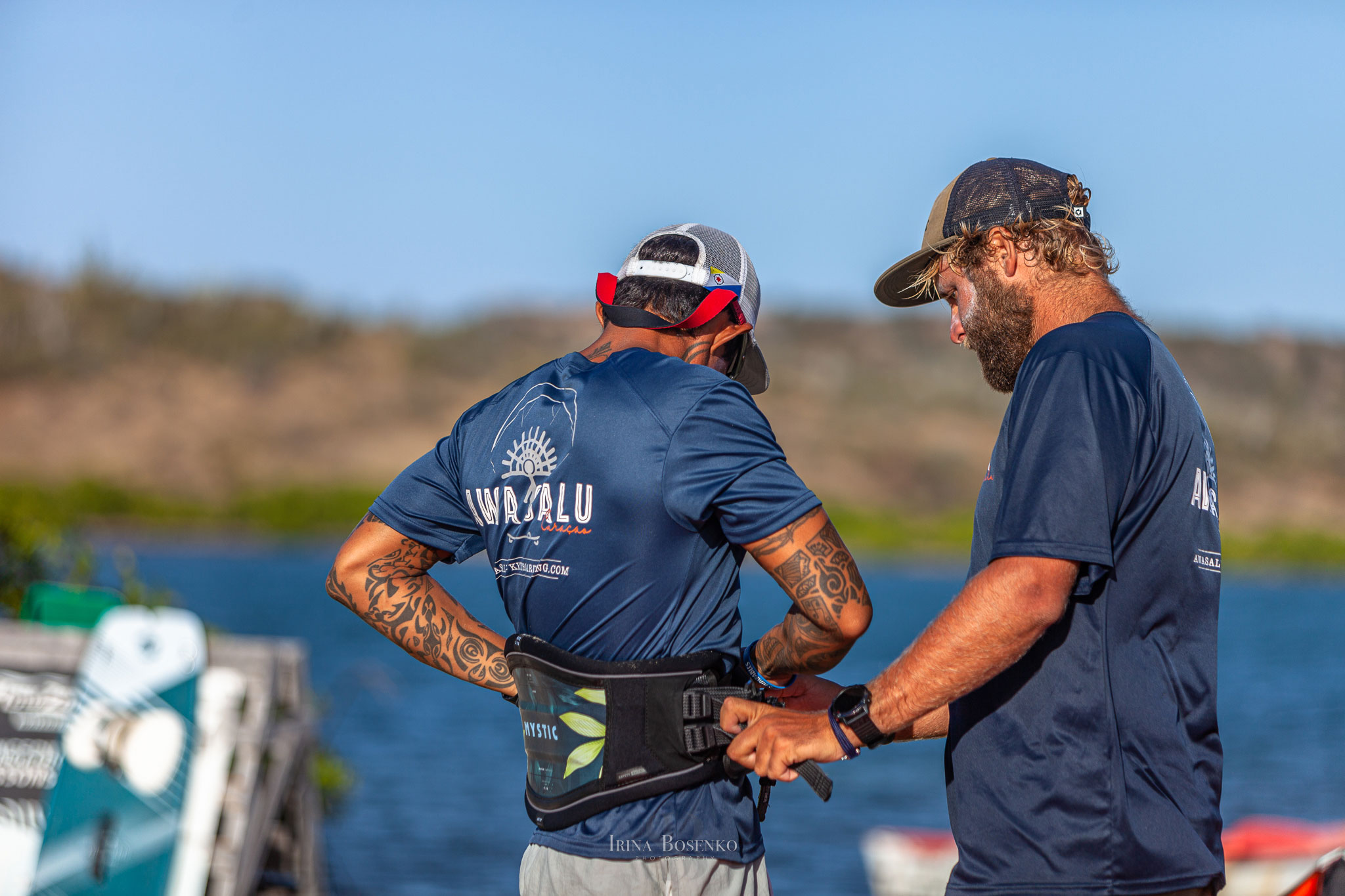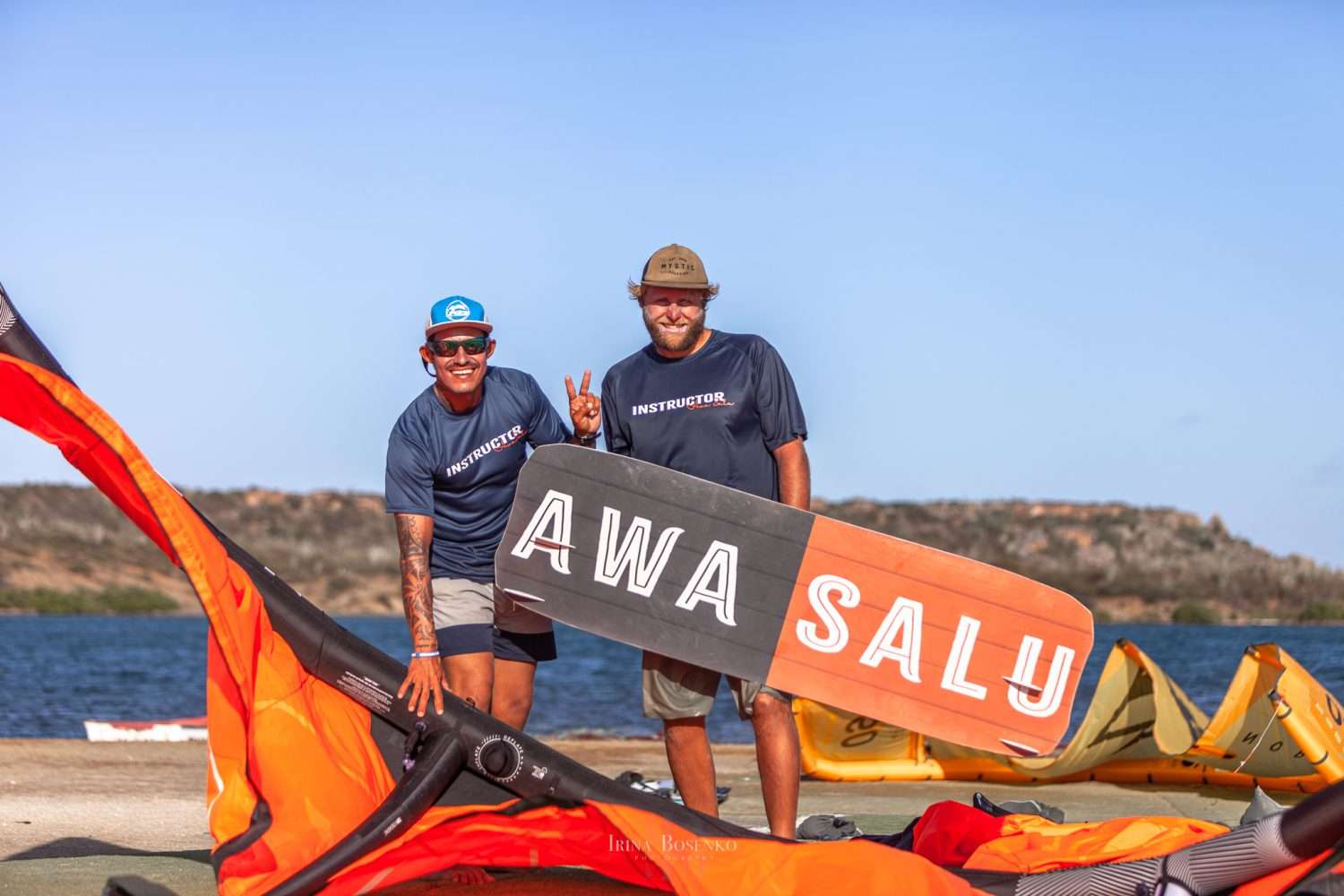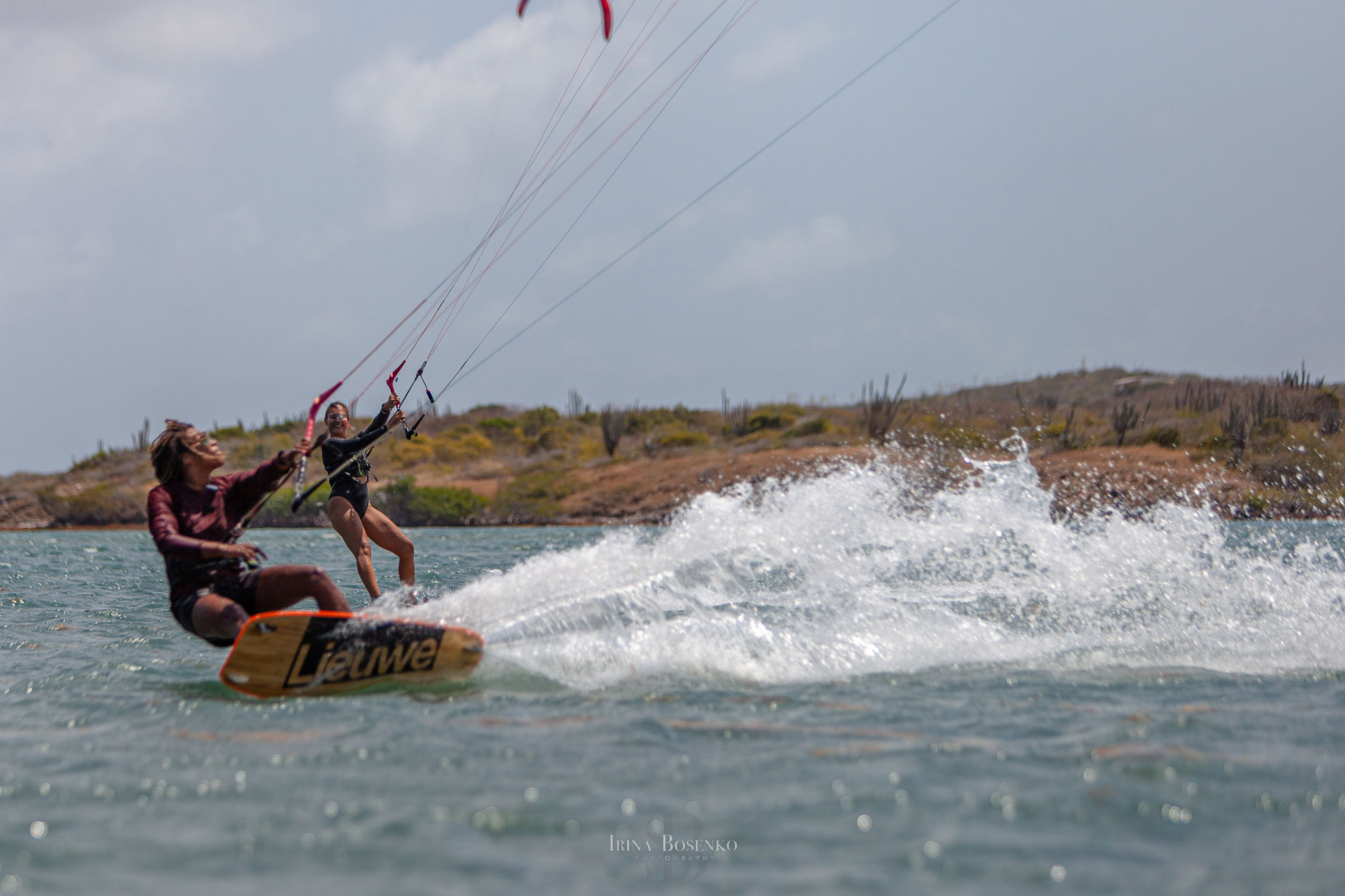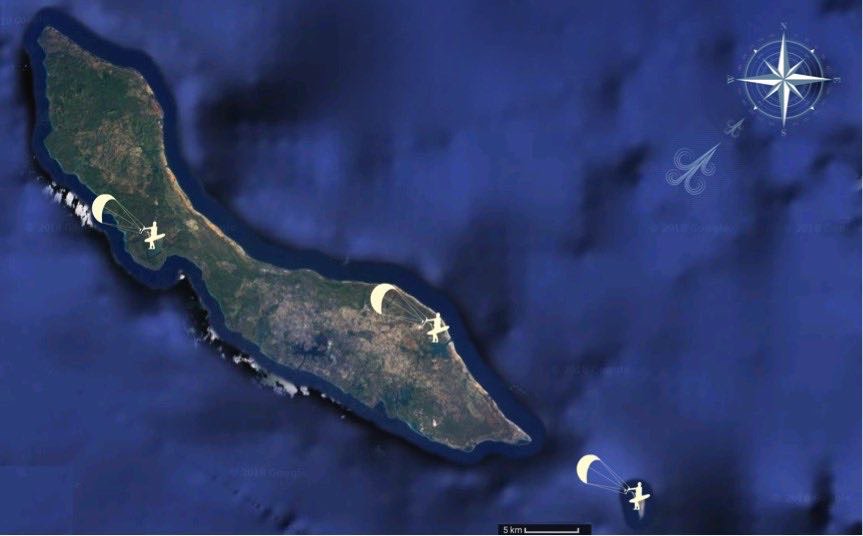How the Kite flies
How does the kite fly?
It has been slamming onto the water for over 30 minutes now… While Yoël has been calling out for about the same amount of time already…
All I have been hearing is… “Release the bar!!” Bwwwhhaaaammmmm “Let go of the bar!!” Frrrrrrrttttt Bammmmm “Not the orange line!” Crashhhh.
It’s my day off, but it isn’t Yoël’s. That beautiful first lesson… I turn around in my hammock and return to reading my book. When about 1 hour later I realize that they are quiet, no slamming and no calling. I lower the side of my hammock and turn to check on them..
The kite flies stable at a 45° angle and I see how it steadily pulls two heads upwind against the berg’s of the St. Joris Bay.
I smile and turn back around. The kite finally just pulls them along…. But how and why does it?
Why does the Kite pull..
The kite pulls due to air being a fluid and the kite, when trimmed correctly, acting as a lift producing airfoil. As long as there is movement, both airflow (wind) and kite-movement (apparant wind) count, the kite and air interact to produce the forces lift and drag. To keep the kite and rider balanced the lift is counterbalanced by weight and drag by forward kite-movement/board speed
Lift
Due to the kite being “in the way” of the stream of air, the air needs to make place for the kite.
The wind impacts the kite at the leading edge and divides to either go over or under the kite.
When the wind goes underneath the kite, it will be a steady stream of unmanipulated air.
The moment the air goes over the kite it, due to a slight bulge in the shape of the kite, compresses between the kite under and steady air stream over, speeding up losing air pressure.
Since the air pressure underneath the kite is now higher than over the kite, the kite is pushed/sucked upward towards the lower pressure area. The faster the wind, the bigger the pressure differences between the top and underside of the kite.
This upward pushing is called lift.
The amount of speed at which the kite and air collide determine the amount of lift created by the airpressure difference underneath and on top of the kite. But also the angle of the kite on the wind direction, or angle of attack, determines the amount of lift created. The more you pull the trailing edge down into the wind, the larger the lift.
There needs to be a minimum amount of lift for the kite to fly and an angle of attack can become to large making the kite fall out of the sky. All of this is mostly evident when the wind is on the lower side.
Keep the Kite Flying
When the wind is strong enough, the lift created with the bar completely out is enough to keep the kite flying. When however the wind is not strong enough, and you do not seek to find the lift force by pulling in the bar a bit, the kite might stop creating lift at all (stall) and fall out of the sky either with wingtips down, or upside down (Hindenberg, also a sign of steering lines that are to long(even after fully powering your trim)). So in low winds it’s important to always keep your ‘Sweetspot’. When you force the leading edge of the kite down too much, the kite stops producing lift and will fall back (back stall) like a beautiful sunset, this you can fix by STOP PULLING THE BAR SO MUCH! Yeah sorry… we can’t say that sentence without YELLING ANYMORE…
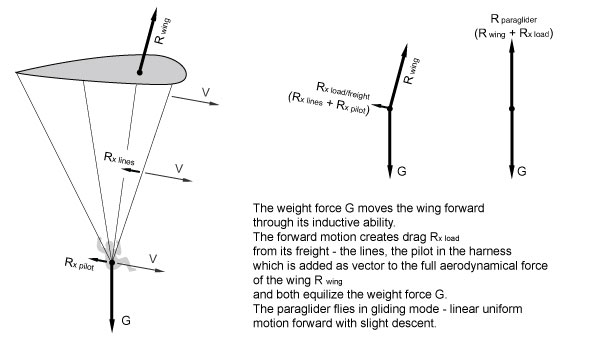
You can also increase the apparent wind, therefore increase the lifting force, by moving the kite up and down. You can make the pressure underneath the kite greater by quickly leaning back against the kite or shortly but quickly pushing your board upwind, giving the kite some added pressure to turn easier or climb up easier.
When Doubling the Wind
When doubling the (apparent) wind, the lift is four times greater.
The principle for an aircraft is the same, the only difference is that an airplane does not need wind (moving air). The airplane itself, during take off can move so fast that it creates enough of its own moving air.
A kite is in need of a minimal amount of airflow to be able to create enough lift to fly. The minimal amount of airflow needed depends on kite size, the weight of the kite and the air pressure of the air itself.
The force that counterbalances lift when riding are rider weight and board resistance, and when body dragging body weight and body/water drag.
Drag
The (apparent) wind of course wants to drag everything to where it’s going.. Everything it can push against.. The leading edge itself is susceptible to drag. So are the lines, the rider and even the stitchings on the kite.
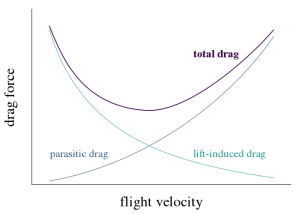
Drag is the force opposite to the direction of where the kite is going. It will without a forward driving or backward preventing force cause the kite to stall.
There are two types of drag. Parasitic- and Induced drag.
Parasitic drag is created due to irregularities on the surface of the kite, such as the stitchings, but also due to the shape, lets say a large leading edge. The faster the kite goes, the faster the airflow will slam into the irregularities, the greater the parasitic drag becomes. Induced drag is induced when the kite redirects the airflow. This is done with the angle of attack. The greater the angle of attack, the more airflow is redirected/lift is created, therefore the more induced drag there is. The faster the kite goes, the less airflow is directed, the lesser the induced drag will be.
The force that counter balances drag is thrust(forward force). The thrust comes from the board speed.
Rider
The rider controles the amount lift or pull of the kite inflight by moving the kite in a certain flight pattern and by adjusting the angle of attack via the backlines/steering lines attached to the bar, sheeting it in or out.
The amount of drag can be lessend by always having an optimal angle of attack (sweet spot). The board speed therefore kite speed, counters the induced drag.
Board speed is in a nutshell the forward force created by the harnessed lift force of the kite against the board pressure pushing against the water. The kite pulls the board against the high pressure(water) and the board pulls the kite against the high pressure (air underneath the kite). These two opposite forces have nowhere to go but forward… and voilá… The board speed is feeding the kite speed and vice versa…..
All of the sudden icy cold waterdrops touch my sun warmed skin and the last thought releases itself brutally from my mind. I look up and look straight into two pair of really happy eyes…
“Kim I did it!! I rode the board for about 20 meters!! It was amazing! Kiteboarding is just like magic!”. I smile at their adrenaline rushed movements and happy faces and do one last stretch in my hammock….
Magic? Nah… Only aerodynamics..
Share this post
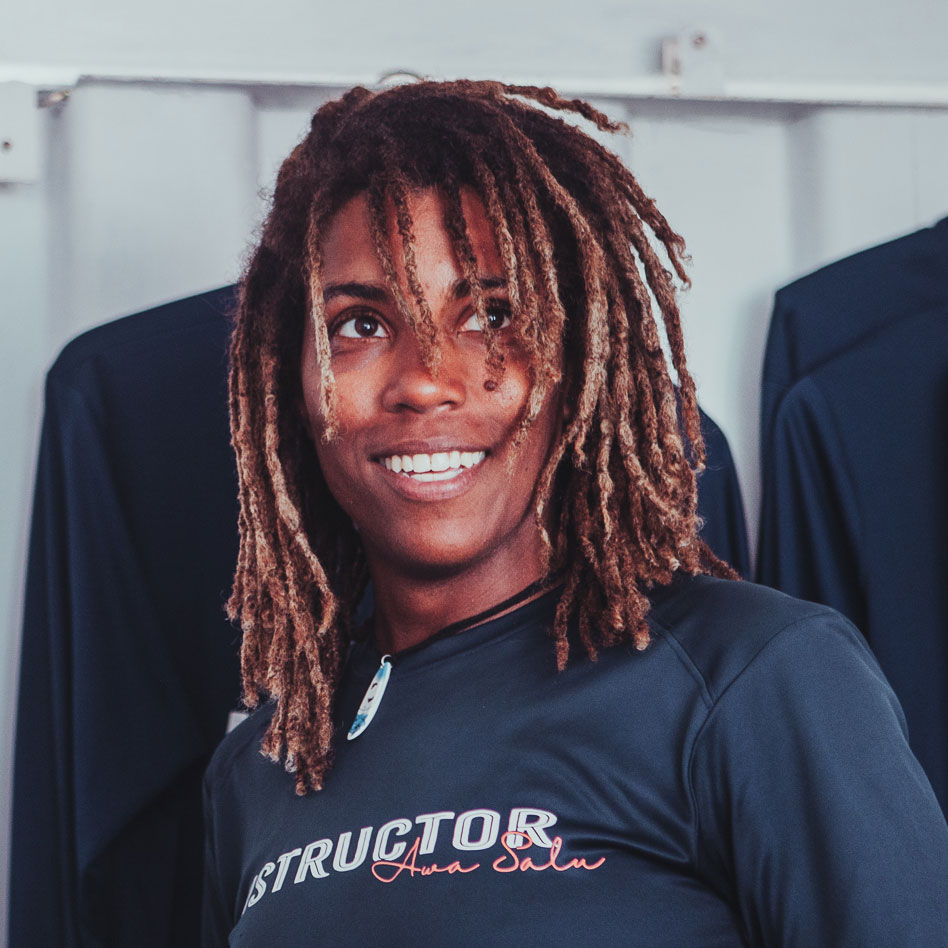
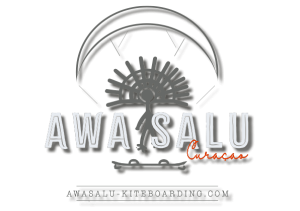
AWA SALU KITEBOARDING
St. Joris Baai Curaçao
Latest library items
Hoe het weer werkt
Het is weer zover… Het orkaan én regenseizoen hebben zich weer aangekondigd. Al een paar dagen is er geen zuchtje wind voelbaar en de nachten zijn voorzien van heerlijke regen [...]
Buying A Second Hand Kite
Buying a second hand kite can be a bit tricky unless you know exactly what you are looking for, so let's make that happen! Do you want a new [...]
Is Kiteboarding Dangerous?
If kiteboarding is dangerous? Well, the most important of all is that almost everybody can learn to ride. Women, men, young and old. Even if you are not the fittest [...]
The weather on Curacao
For the weather on Curacao are going at it again.. the hurricane- ánd rain seasons have announced themselves. For a couple of days already there isn’t a single breeze to [...]
